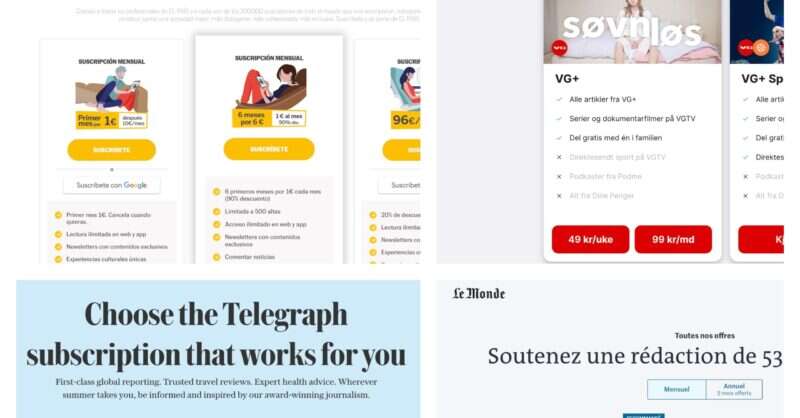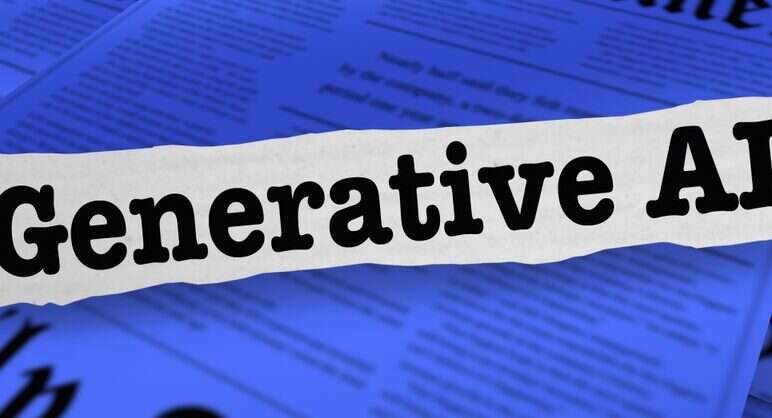- Digital Media Products, Strategy and Innovation by Kevin Anderson
- Posts
- How publishers can develop a culture of outcome-driven experimentation
How publishers can develop a culture of outcome-driven experimentation
UK and European Publishers' subscription discount strategies
Media innovator Dan Pacheco’s recent talk about a toolkit for assessing emerging technologies takes me back to my master’s study in innovation management. One of the most important sets of tools that I learned was how companies - whether in publishing or technology - can de-risk choices. Dan Pacheco has been working in media innovation for as long, if not longer than I have, and I think that one of his key points about the need for experimentation is key. And this isn’t just throwing stuff at the wall to see what sticks. Advanced media companies such as the Financial Times have developed a structured way of approaching experimentation. The FT’s North Star framework supports companies in developing an overarching goal that helps align the company. From that North Star goal, a company develops outcomes, and those outcomes frame experiments to test hypotheses.
One of the most important elements of an aligning goal is that it helps filter out the possible outcomes and experiments to keep an organisation focused. And focus is critical because, in this era of change, it is easy to become distracted. Julie Posetti in a piece of research for the Reuters Institute for the Study of Journalism warned publishers of succumbing to the Shiny Object Syndrome. And I can think of this with things like the NFT craze, which was driven a lot by excess capital during the pandemic looking for high returns and creating a temporary bubble that has since collapsed. As I have often said during my years of consulting with media companies, there are so many things you can do in digital media that the challenge is figuring out what you must do.
Publishers worldwide are facing a challenge, which is to build direct relationships with audiences. They no longer want to “rent an audience” on another platform whose motivations might run counter to their own. Based on a census by the Economist’s head of newsletters, 123 publishers have a presence on Telegram. The messaging service offers unique benefits for publishers in or wanting to reach audiences in Eastern Europe, Russia and the Middle East. It provides public channels and private chats, and it has proven difficult for repressive governments to block. Russia has tried. This line from the piece in Media Makers Meet stood out for me: “Telegram combines personal communication and broadcast capabilities effectively, offering a direct connection with audiences.” It is a good reminder that for publishers in certain geographies, the tools will be different than others. We’re in that moment when the retreat from the news by Facebook and the decline in relevance of Twitter/X means that regional tools will rise in importance again.
Greg Piechota, researcher at INMA, outlines the thinking behind publishers’ discounts. As he points out, the most successful publishers target the highest consumers of news, and these audiences tend to be affluent and not necessarily suffering too badly from inflation and the cost of living crisis. And INMA’s data counters some of the pessimism around the subscription economy showing that there is still growth both in volume and revenue with subscriptions. There is really good data in this report that shows that most publishers offer discounts but not massive ones - most in the 1 to 14% range. There are some excellent benchmarks in this research to keep handy.
Are you behind in adopting AI? Join the club. It is still early days for many news organisations, according to an LSE survey.
The FT has launched a new app for its international readers. The replica app is only used by about 16,000 subscribers, but 81% of those are abroad. The FT’s continued development of this digital edition makes sense as the costs of print grow. This allows them to offer a print-like experience without the costs.
Here is a great resource for product managers about how to work with vendors, and now that I’m on the vendor side of this relationship. There is some great advice here especially about communicating priorities and building relationships both in your organisation but also with the vendor that you're working with.
With my wife now writing three newsletters on Substack, I have been watching its development more than I was a year ago. And I have to say that the company is definitely building a platform, not just a newsletter tool. I am curious about new user acquisition outside of the newsletter writers themselves. I would be fascinated to see the growth in consumers of the newsletters rather than just creators of them. But they definitely are iterating their product rapidly.
I’m just going to end this newsletter with a small detail about the continuing decline, if not all-out collapse, of local news media in Canada. It’s really sad to watch this, although I have seen this happen over the last decade in the US and UK first-hand.






/cdn.vox-cdn.com/uploads/chorus_asset/file/24575655/Substack_001.jpg)
